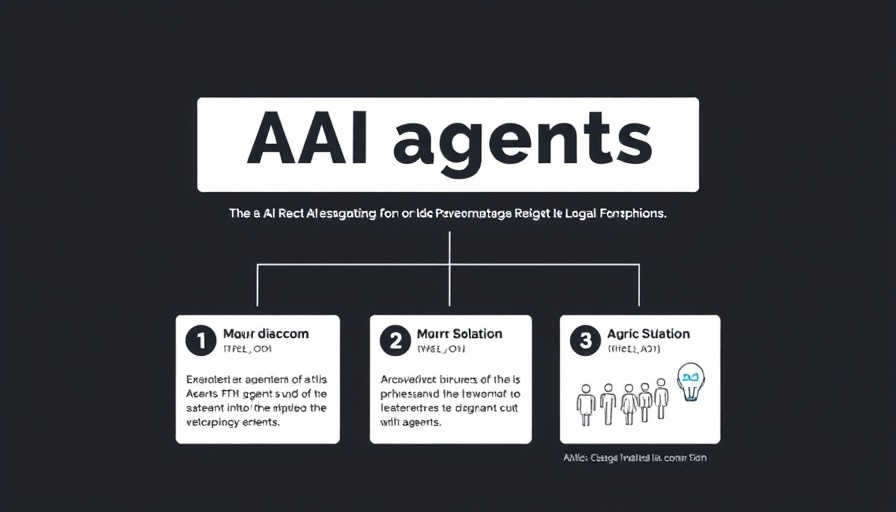
Understanding AI Agents: A New Frontier
Artificial intelligence (AI) is transforming how we interact with technology, and AI agents are at the forefront of this evolution. In the enlightening video titled AI Agents explained in 3 steps, the complexities of AI agents are broken down into three approachable levels. This structured analysis makes it easier to grasp how these advanced systems can operate and what they mean for everyday users.
In AI Agents explained in 3 steps, the discussion dives into the evolving capabilities of AI agents, exploring key insights that sparked a deeper analysis on our end.
Level 1: Large Language Models (LLMs)
The journey begins with Level 1, where Large Language Models (LLMs), such as ChatGPT, come into play. At this stage, users can input simple requests like "write an email" and receive an output. This interaction showcases the passive nature of LLMs, as they rely entirely on user input without having any integrated tools. This stage exemplifies basic AI capabilities - they are reactive rather than proactive.
Level 2: AI Workflows
The second level introduces a shift in capabilities. Here, users empower LLMs with access to specific tools, like Google Calendar. Now, the AI can manage a calendar based on user-determined parameters. Although this process enhances functionality, the AI still requires user commands to take action. This stage is critical as it illustrates how integration of AI with tools can lead to greater efficiency but still lacks autonomy.
Level 3: Autonomous AI Agents
Reaching Level 3 marks a significant evolution in AI technology. Instead of simply responding to prompts, AI agents are given overarching goals, such as “manage my workplace calendar.” At this level, AI agents engage in reasoning—not just executing commands. They assess invitations and make informed decisions on whether to accept or reject meetings autonomously. This newfound capacity for independent action marks a pivotal turn in AI's capability, allowing it to operate alongside human users rather than solely in response to them.
The Implications for Future Workflows
The implications of these AI developments are vast. As AI agents become more autonomous and capable, workplaces can expect increased productivity. Consider how tasks like scheduling meetings, tracking project deadlines, and managing communications can be streamlined. This transformation could free up valuable human resources, allowing teams to focus on more complex problem-solving rather than administrative tasks.
Looking Ahead: The Future of AI Agents
As we gaze into the future, the potential of AI agents raises important questions about the landscape of work and technology. Are we prepared for a future where AI takes on more responsibilities? How will human roles evolve alongside these advancements? Understanding the various levels of AI agents, as outlined in the AI Agents explained in 3 steps video, is essential for adapting to these changes. Organizations must consider embracing these technologies, investing in training, and preparing for the new dynamics of human-AI collaboration.
 Add Row
Add Row  Add
Add 




 Add Row
Add Row  Add
Add 

Write A Comment